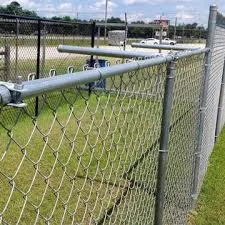Understanding Expanded Metal Mesh Roll Versatility and Applications
Expanded metal mesh rolls have gained immense popularity across various industries due to their unique characteristics and versatile applications. This type of material is made by taking a solid sheet of metal and cutting it in a specific pattern, which is then stretched to create a mesh-like structure. The results are not only lightweight but also strong and durable, making expanded metal mesh rolls an ideal choice for a plethora of uses.
One of the primary advantages of expanded metal mesh is its strength-to-weight ratio. Although it is made from metal, the openings created during the expansion process significantly reduce weight without compromising structural integrity. This property makes it an excellent choice for applications where weight is a critical factor. For example, in construction, expanded metal mesh rolls are often used for security fencing, walkways, and platforms, providing safety while staying lightweight.
Another aspect of expanded metal mesh rolls that sets them apart is their versatility. They come in a variety of materials, including aluminum, steel, and stainless steel, which can be selected based on the specific needs of a project. Stainless steel expanded metal, for instance, is particularly resistant to corrosion, making it suitable for outdoor applications or in environments where exposure to moisture is expected. On the other hand, aluminum versions are often chosen for decorative purposes due to their aesthetic appeal and lightweight nature.
In architectural design, expanded metal mesh rolls are frequently utilized for facades, screening systems, and even interior elements. The open structure allows for light and air circulation while providing a level of privacy and security. Designers appreciate the ability to customize the appearance of expanded metal mesh rolls through finishes and coatings, giving them an edge in creating visually striking spaces.
expanded metal mesh roll

In the manufacturing sector, expanded metal mesh is used in machinery and equipment for filtration, grating, and tray systems. Its pattern allows for efficient fluid flow while preventing unwanted particles from passing through. This makes it essential in sectors such as food processing, chemical production, and wastewater treatment. Additionally, the use of expanded metal mesh rolls can enhance productivity, given their ability to withstand harsh conditions without degrading.
In the realm of automotive and aerospace industries, lightweight expanded metal mesh components are increasingly being integrated into designs to optimize performance while reducing weight. This trend is particularly relevant as manufacturers seek to meet fuel efficiency standards and reduce carbon emissions. The use of expanded metal not only contributes to a reduction in weight but also adds to the overall strength and safety of vehicles.
Expanded metal mesh rolls are not just limited to industrial applications; they are also increasingly being utilized in the art and design world. Artists and designers explore innovative ways to incorporate this material in sculptures, installations, and functional art pieces, showcasing its versatility beyond conventional usage.
In summary, expanded metal mesh rolls are a multifaceted material that offers numerous benefits across a wide range of applications. From construction and architecture to manufacturing and art, the unique properties of expanded metal make it an invaluable resource in both practical and creative contexts. As industries continue to explore sustainable and efficient solutions, expanded metal mesh rolls will likely remain at the forefront, embodying the balance of functionality and aesthetic appeal. Whether for safety, support, or design, the role of expanded metal mesh in modern applications is undeniable and ever-evolving.
















